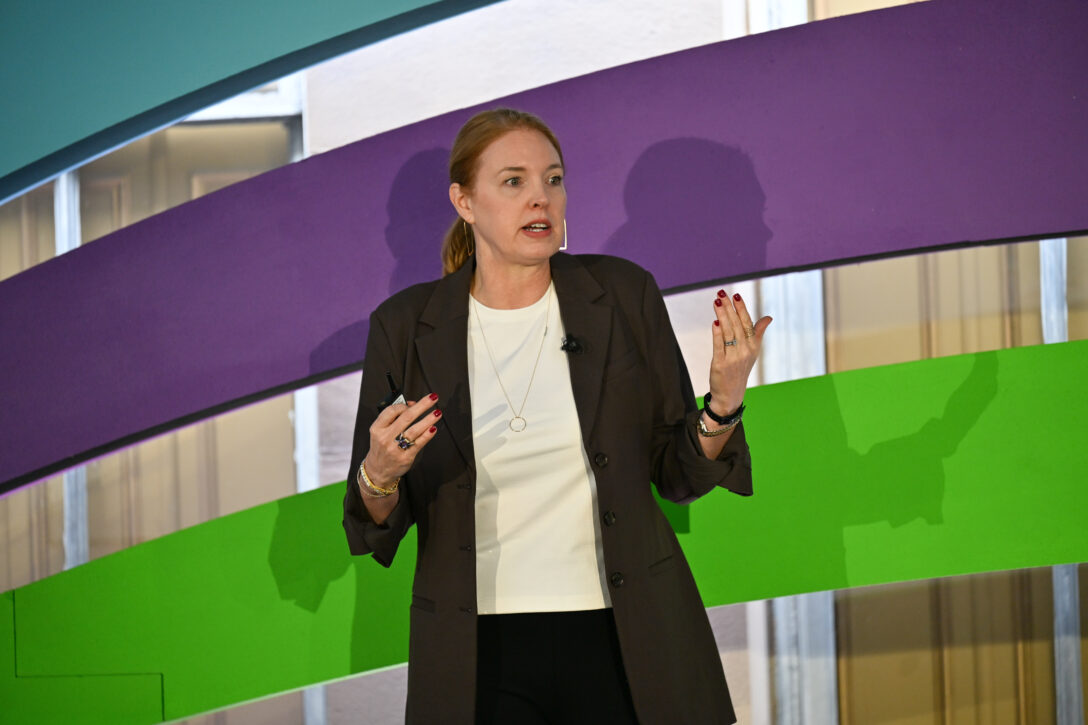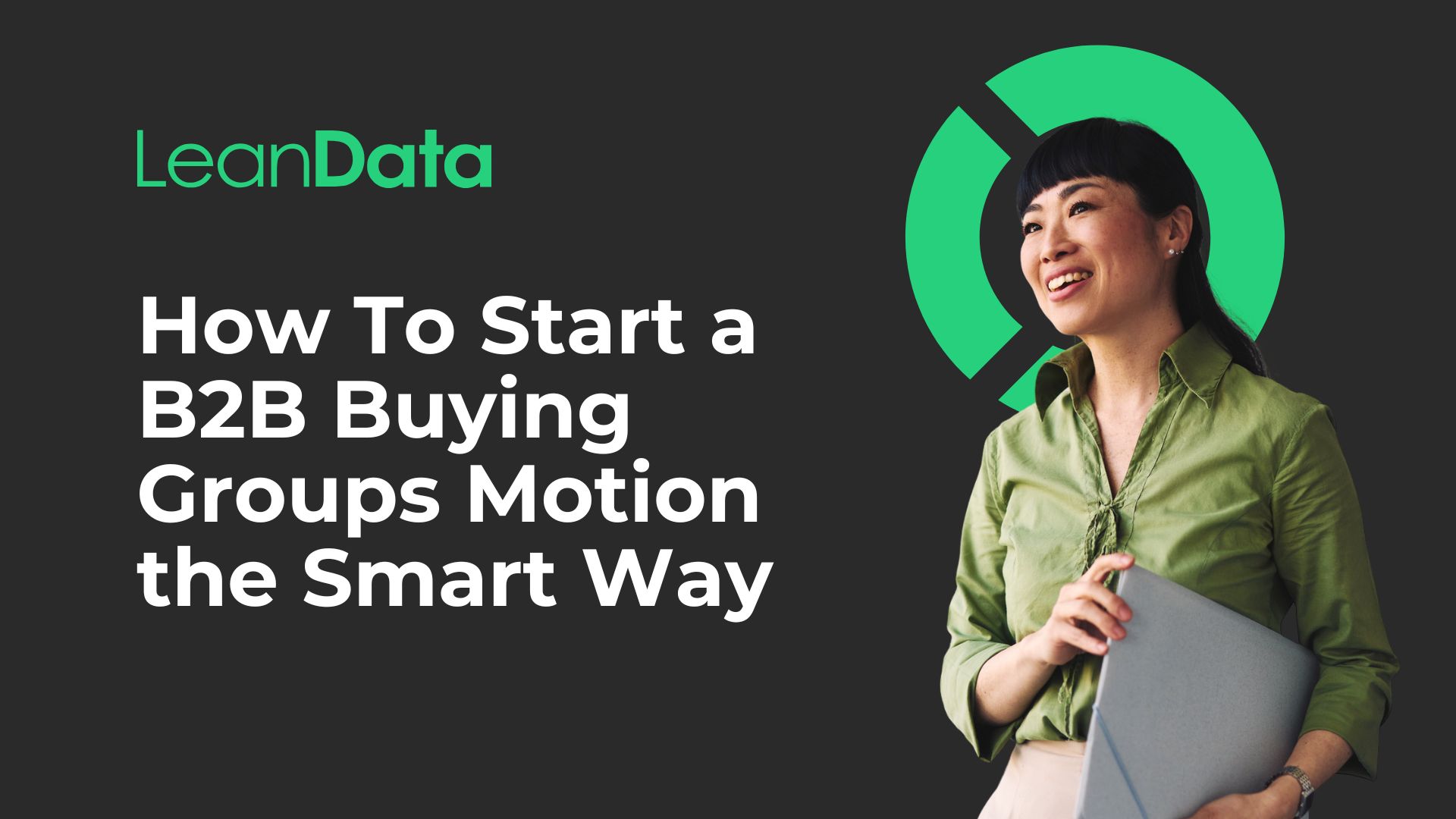Summary
Buying groups are reshaping how enterprise teams understand and support the B2B buying journey. This guide explains practical steps to use a B2B buying groups go-to-market motion effectively with the tools and signals you already have.
What You Will Learn
- How modern buying groups behave and why traditional processes fall short.
- Ways to identify buying groups using your existing systems and signals.
- How to partner with sales and SDR teams to improve conversations.
- How to align your revenue teams through shared processes and common signals.
- How AI and insights help evolve buying group execution across the full customer life cycle.
Buying Groups: From Theory to Practice
The fastest way to improve your go to market performance is to accept one truth:
Your buyer is not a single person.
They are a group of people who move together, influence one another, and expect you to keep up with them.
This is the shift Forrester’s Amy Hawthorne urged every organization to make at OpsStars 2025 because modern buyers behave differently than they did even five years ago.
They conduct more research on their own, rely heavily on peers, analysts, and AI for insights, and expect vendors to be ready when they need them, not when a process decides they are qualified.
This article will help you move from theory to practice.
It offers a clear path to getting started with buying groups, using what you already have, and building momentum without waiting for a major transformation effort.

Why B2B Buying Groups Matter More Than Ever
First, buying groups exist whether you plan for them or not.
Forrester’s research shows the average buying group includes thirteen internal participants plus additional external voices such as partners, peers, customers, and analysts. Consequently, the buying journey is now more informed, more complex, and far less linear.
Next, buyers complete most of their research before speaking with a sales representative.
Many arrive with a preferred vendor in mind and a short list of questions. When teams continue to rely on outdated qualification motions or rigid handoffs, buyers feel frustrated and disconnected. As a result, the experience breaks down even when the buyer eventually selects the vendor.
Step One: Capture and Connect the Signals You Already Have
You do not need new technology to begin.
Most enterprises already capture signals across campaigns, websites, intent tools, events, SDR activities, and customer success systems. The opportunity is to connect those signals to the account and to the people involved in the buying process.
- First, review what signals you already collect. Look at marketing interactions, account attributes, product interest areas, event participation, and sales engagement.
- Next, connect these signals to accounts wherever possible. This helps you form a more complete view of who is involved.
Then ask yourself a simple question: If you applied an account filter to your MQL reporting, would you see multiple people active within the same company?
This alone helps you reveal buying groups. When five people in one account download resources, attend webinars, or view product pages, the interest level is significantly higher than a single interaction.
The good news is that most teams can do this today without changing anything in their stack.
The goal is not new data. The goal is using your existing data in a more meaningful way.
Step Two: Train SDRs to Use Signals in Better Conversations
Modern buyers do not answer phone calls from unknown numbers. Very few offer real mobile numbers on forms. Teams that rely on outdated qualification steps feel the impact every day.
SDRs and sellers need a different starting point for conversations. Use the signals you have to make the outreach more relevant.
For example, if two people from an account engage with the same solution, ask the person you reach whether those teammates should be included in the next conversation.
This simple technique does three things:
- It validates whether a buying cycle is underway.
- It reveals who the real buying group members are.
- It helps the SDR shape the next meeting to include the people who matter.
SDRs can stop forcing a rigid set of qualification questions and instead guide buyers with a more helpful, concierge style approach. Ask whether they found what they needed, offer to connect them with a product expert, and help them navigate the information they already discovered.
These shifts build trust, increase meeting quality, and support the way buyers want to engage.
 “There was not one time in our entire buying groups pilot where we’ve seen a negative impact. Deals are bigger, 2x 3x, 4x, and they Close Won at a higher rate.”Jeremy Schwartz
“There was not one time in our entire buying groups pilot where we’ve seen a negative impact. Deals are bigger, 2x 3x, 4x, and they Close Won at a higher rate.”Jeremy Schwartz
Step Three: Attach Buying Group Members to the Opportunity
Once you identify buying group members, attach them to opportunities as early as possible. This helps teams understand which deals move faster, which stall, and which roles participate at each stage.
Plus, it gives marketing, SDRs, and sellers a shared view of the people involved. This shared context improves alignment and helps teams plan better outreach and better programs.
LeanData offers capabilities that support this step, such as routing, matching, and Buying Groups Edition features, but the core idea does not rely on any specific tool.
It is about creating a consistently connected view of people, signals, and opportunities so everyone works from the same understanding.
Step Four, Form a Revenue Council to Improve the Process
Buying groups require operational alignment.
A revenue council gives teams a dedicated forum to address process breaks, poor handoffs, misaligned qualification steps, or gaps in visibility.
Unlike a pipeline review, a revenue council focuses on how the process works, not whether deals are on track. It gives leaders from marketing, SDR, sales, operations, and customer success a place to collaborate on improvements.
Amy emphasized that most buying group progress starts with one team willing to partner and experiment. A revenue council accelerates that progress by making collaboration routine rather than exceptional.
Step Five: Map Personas to Buying Group Roles
Personas and buying group roles are not the same. Personas capture who people are and what matters to them. Buying group roles define what part they play in a specific decision.
For example, a marketing leader may champion an ABM solution but act as an influencer when the company evaluates a CRM platform.
When you map personas to buying group roles for each buying scenario, you gain clarity on:
- what to say
- when to say it
- how much influence the person holds
Next, match signals to these roles.
- If an influencer triggers a signal first, your program should support both their needs and those of the decision maker who will soon join the conversation.
- If two people engage in the same week, coordinate your next actions so the group receives consistent information.
This alignment prevents conflicting messages and lowers the risk of confusing or overwhelming buyers.
Step Six: Look Across All Signals to Adjust Programs in Real Time
Modern buyers expect companies to notice their activity and respond in a relevant way. They know you can see webinar registrations, website visits, product interest, and intent activity. Your programs must adapt based on what the signals indicate.
First, identify shared behaviors across buying group members. Next, use those behaviors to adjust your program flows. For example, if someone signs up for a webinar and you notice they live in New York, you may decide to invite them to an upcoming field event in the same area.
Then, look beyond individual journeys. What does the entire group need? If a deal stalls because a key person has not engaged, signals can help identify the gap.
Where AI Becomes Increasingly Important
AI helps teams interpret large volumes of signals and recommend next best actions across marketing, sales, and customer success. It shifts programs from scheduled activities to responsive interactions.

Step Seven: Extend Buying Groups Across the Entire Customer Life Cycle
Buying group alignment does not end at closed won.
The same people who evaluate your solution also influence onboarding, adoption, expansion, and renewal.
Customer success signals matter just as much as pre-sale signals. Lack of engagement, missing training, expired champions, or poor login activity all affect account health.
Use these signals to adjust your customer programs, just as you would your acquisition programs.
The same opportunity life cycle continues. Buyers discover, evaluate, commit, launch, actualize, and advocate. Your organization must match that cycle by adjusting your plays at each stage.
Where To Focus Next
The most successful organizations start small.
They find a partner, pick a buying group scenario, and test their approach. As they learn, they expand the model across teams, regions, or business units.
Focus on what you have today.
You already hold enough signals to understand who is buying, how they are behaving, and where they are in their journey. The next step is connecting those insights so your programs align with the people who participate in buying decisions.
Buying groups are not a future state. They are already here. The companies that adapt will create a more coordinated, more relevant, and more valuable experience for buyers.












